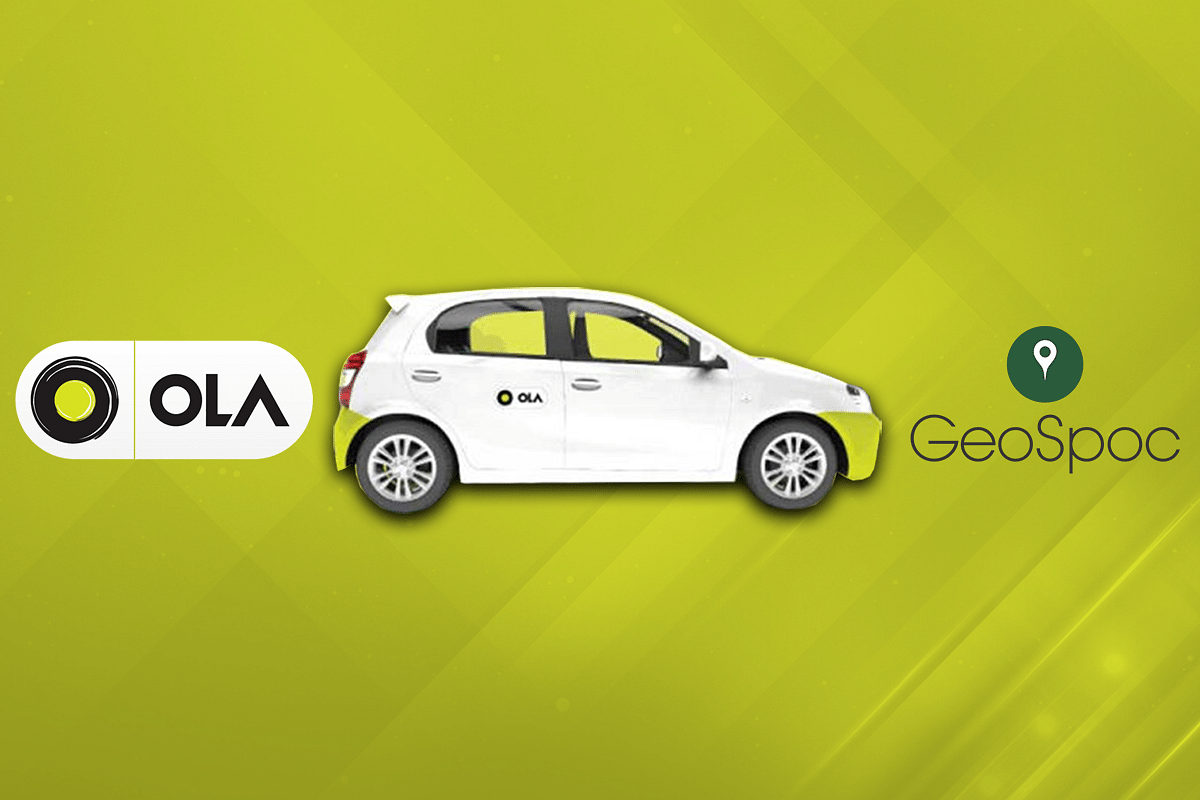Technology
Ride-Hailing Giant Ola Acquires GeoSpoc To Develop Next-Generation Location Technology
- Ola has acquired leading provider of geospatial services GeoSpoc to develop next-generation location technology.
- As per Ola CEO, the company has data, geospatial details and a deep understanding of consumer movements that can be combined with new sources like satellite photography and visual feeds from the on-ground network to create 'Living Maps' that reflect the world's evolving geography.

Ola acquires GeoSpoc
Ride-hailing major Ola has announced on 5 October that the company has acquired Pune-based GeoSpoc, which is a leading provider of geospatial services to develop next-generation location technology.
Dhruva Rajan, who is the co-founder of GeoSpoc, will join Ola to build solutions that will make mobility universally accessible, sustainable, personalised and easy across shared, as well as personal vehicles. However, the terms of the agreement haven’t yet been revealed.
In a blog post, Bhavish Aggarwal, chairman and group CEO of Ola said: “I am thrilled to have Dhruva (Rajan) and his team join Ola and look forward to building the next generation of location technology for the world, right here from India.”
According to Aggarwal, new mobility will result in significant changes in the way people travel. As explained, new vehicles form factors and modes of transportation and that will revolutionise our daily lives.
Investments in next-generation technologies, such as location and geospatial technology, as well as breakthroughs in satellite imagery conversion into real-time maps, 3D, HD and vector maps, will be required to achieve these fundamental changes. Aggarwal said that “we are taking the first step towards this by acquiring GeoSpoc”.
In the future years, personal mobility is predicted to expand to encompass 50 to 100 per cent of India's population, and because of that, maps will need to improve in a number of ways. These include having accurate and detailed maps with a high level of user context available to everyone beyond the first 100 million users.
Geospatial intelligence will be required to comprehend the specific benefits of each mode of transportation and provide recommendations accordingly. As aerial mobility models such as drones become more prevalent, maps will need to consider a three-dimensional view of the globe.
The blog post added that maps should also include near-real-time satellite images to provide a better picture of road state, as well as improvements such as avoiding poorly lit streets at night for safety reasons—even if it is a faster route.
Furthermore, autonomous driving will necessitate high-definition and 3D maps, which will provide greater visualisation and dynamic real-time updates based on road, traffic and weather conditions, the post explained. Improved geospatial services will also help to improve urban planning, such as road networks, public transportation and congestion prevention.
The Ola CEO said: “We have the data and the expertise to build this utilising our deep understanding of consumer movements as well as our massive network of 2,3 and 4Ws that provide unprecedented geospatial details.”
According to him, this data can be combined with new sources like satellite photography and visual feeds from the on-ground network to create 'Living Maps' that reflect the world's evolving geography.
Ola has been in the news since the announcement of its electric scooters and before it closed the latest purchase window, the company said that it has recorded EV sales worth Rs 1,100. However, as per the reports, it is now preparing for a public market listing, for which Ola has secured $500 million from Warburg Pincus and Temasek, allowing early backers Tiger and Matrix to leave partially.
According to reports, Aggarwal recently shared his vision of the future of mobility, New Mobility, which includes everything from electric scooters to vehicles to drones and flying cars.
In India, around 30 million people own a four-wheeler, while almost 160 million of the population have a two-wheeler. Furthermore, modern mobility aims to improve this antiquated system by making transportation more flexible. To do this, both shared and personal mobility will grow significantly in India through a combination of purpose-built EVs lowering costs, digital retail driving convenience and the cloud enabling personalisation.
Aggarwal said: “In the coming quarters, we will expand our EV range with more scooters, bikes and cars. Our EVs are smart, connected with AI machines and will leapfrog current personal vehicles that are dumb mechanical devices.”
Support Swarajya's 50 Ground Reports Project & Sponsor A Story
Every general election Swarajya does a 50 ground reports project.
Aimed only at serious readers and those who appreciate the nuances of political undercurrents, the project provides a sense of India's electoral landscape. As you know, these reports are produced after considerable investment of travel, time and effort on the ground.
This time too we've kicked off the project in style and have covered over 30 constituencies already. If you're someone who appreciates such work and have enjoyed our coverage please consider sponsoring a ground report for just Rs 2999 to Rs 19,999 - it goes a long way in helping us produce more quality reportage.
You can also back this project by becoming a subscriber for as little as Rs 999 - so do click on this links and choose a plan that suits you and back us.
Click below to contribute.
Latest